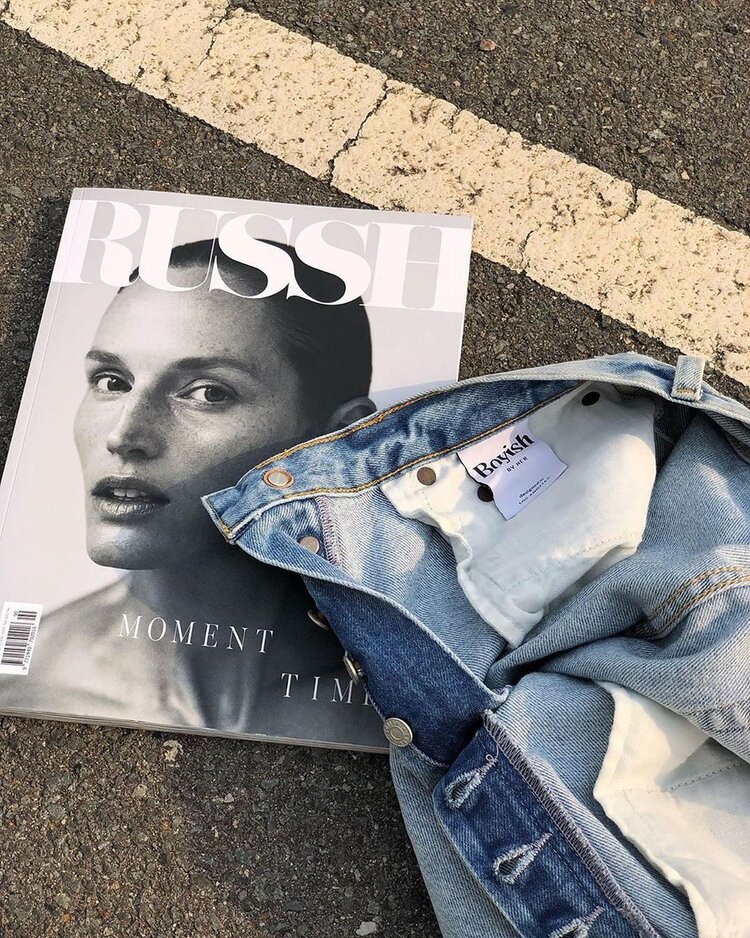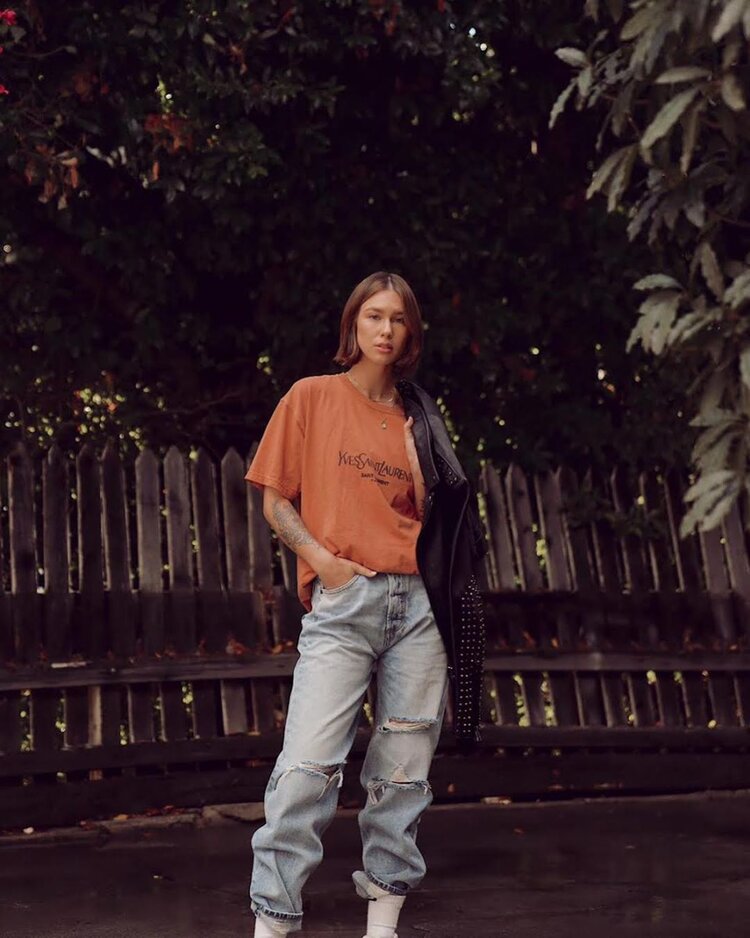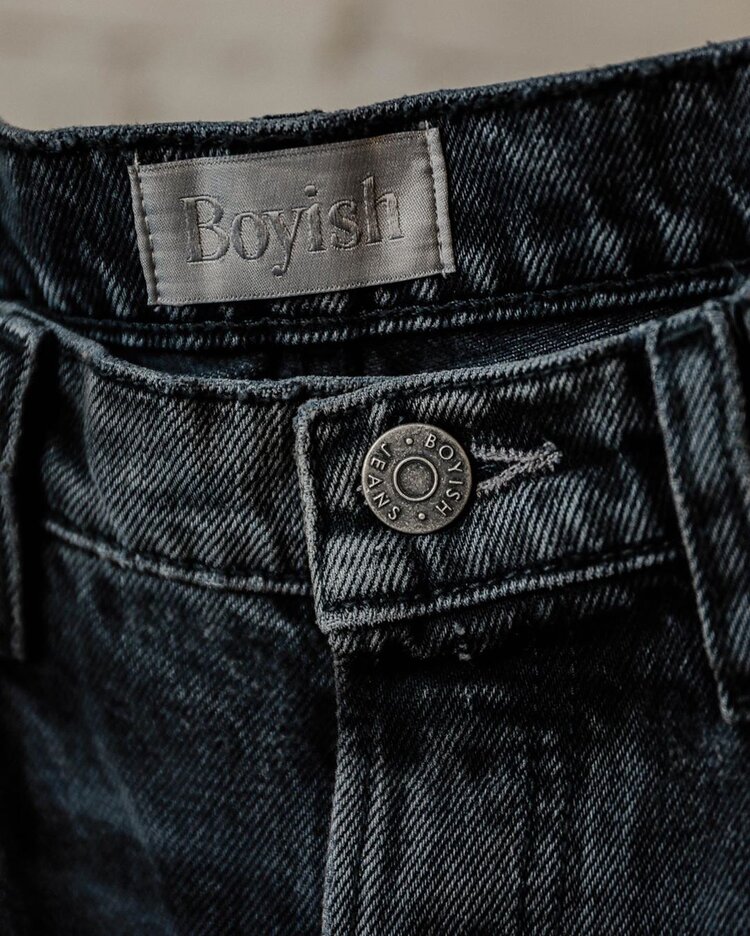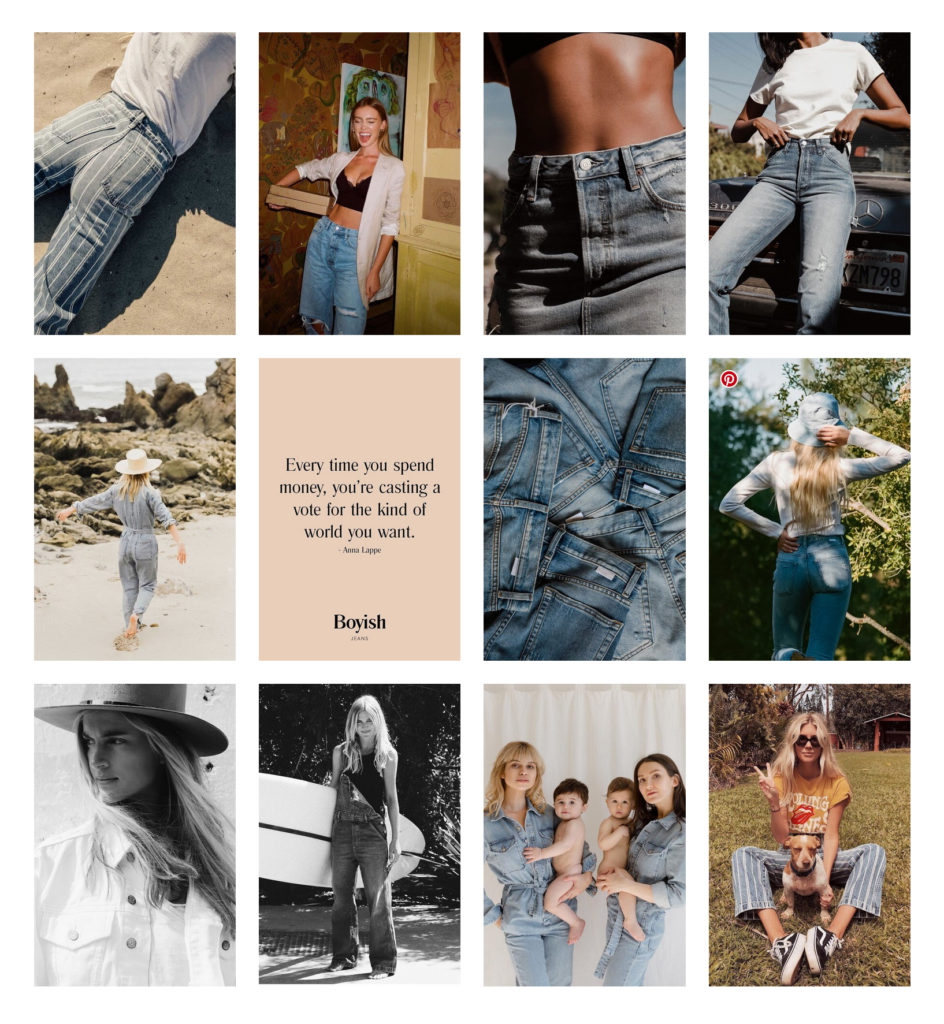There’s a special place in our heart for things vintage and denim and boyish jeans checks all the boxes. Boyish jeans is a collection of sustainable women’s denim, centered around vintage silhouettes with a modern twist. Inspired by the stylish women who describes their personal style as “boyish”, the brand utilizes men’s fabrics and fits tailored for a woman’s body. Boyish focuses on quality, fit, authenticity and a core commitment to leaving as little impact on the earth as possible. The brand utilizes ethical and sustainable practices throughout their product development process, including incorporating environmentally-friendly and cruelty-free processes. Here, we delve deeper with the brand whose only goal is to leave the planet with good jeans.







Can you give us a backstory on how the brand was born?
I’ve always been conscious of the environment growing up in California. As my career in denim evolved and I spent more time in factories around the world, I realized how much waste and toxic chemicals were being used in making jeans. Even though I was already making eco-conscious jeans at Reformation I felt the need to educate consumers more about the what, why, and how’s of creating sustainable products. Boyish Jeans derives from my passion for making environmentally conscious and sustainable jeans, and the need to educate consumers so they have a higher standard and the knowledge when it comes to choosing products to buy.
_
Can you describe the brand in a few words?
Eco-Conscious, Vintage Inspired
_
How is the brand currently sustainable?
Our goal is to be as close to zero-waste as possible. Since our inception, Boyish has focused on creating a sustainable and ethical supply chain that starts from the fibers we use to the way we communicate with our customers. To conserve as many natural resources as possible, our jeans are made with 80 percent less indigo than a standard pair, and around 20 percent of the textiles we use are vintage or deadstock fabrics. Our factories also recycle all water used during the manufacturing process. To lower our carbon footprint, we have strategically placed all of our factories within thirty miles of each other.
We focus much of our attention on recycling because there is a problem. Fashion is extremely wasteful, from disposing of old products to the whole supply chain, so we try to do our part to be as thoughtful as possible in every aspect of our operations.
It’s very important for us to create products that are not only sustainably manufactured but also sustainably priced and deliver a high-quality product to customers at an attainable price point.
We would never offer something to our customers that is sustainable but lacks quality or a great design. We want our customer to know that they can have it all, and that they don’t have to compromise when becoming a conscious consumer.
Our spinner is right next to our mill, which is near our sewing and my laundry factories. They are all approximately 20 miles from each other and this allows us to create a very efficient supply chain.
We use Tonello All-in-One machinery systems that utilize vapor spray and ozone gas, in an all-encompassing controlled machine. These machines use 80% less water, they use environmentally friendly oxygen gas instead of bleach, and use all biodegradable, micro-plastic free, heavy metal free, and chlorine free chemicals.
In addition to reducing our water usage, we also recycle the water that we do use. We make sure to use vendors and suppliers that have environmental certifications like Oeko Tex 100, Bluesign, and Green Label certifications.
_
What do you think of fast fashion versus long-lasting fashion?
Fashion is one of the only industries where technology hasn’t evolved it into a better product. If you look at TV’s, they have gotten thinner, lighter, better definition of picture quality, more internal features, and also, less expensive. Fashion is the opposite of that. Trends change all the time so that consumers have to constantly buy. The quality has gotten worse so it falls apart faster. The fabrics have all turned into polyester or polyamide, or some sort of petroleum-based (fossil fuel) plastic fiber that sheds thousands and thousands of microplastics into our freshwater and ocean water that is also making its way into our human stomachs. Also, let’s not forget the fact that all this is damaging all our homes, mama earth, and also killing humans (Dhaka Rana plaza collapse & the thousands of India cotton farmers that are killing themselves due to GMO cotton seeds).
Vintage clothing is extremely important! If jeans are made well, then they should last through the ages, which gives them the chance to be passed from generation to generation. This is why we use mostly heavier 100% natural fiber fabrics. They last longer, they can be recycled, and they don’t have any plastic petroleum oil-based fibers like traditional stretch denim.
_
Did your personal convictions affect your desire to build a sustainable brand? Or vice versa?
No. It wasn’t until I learned how harmful the fashion industry was on the earth.
_
How many collections do you work with per year?
4.
_
“Who made my clothes?” seems to be a central question in this fashion revolution. What are the questions you’re asking yourself before launching a new collection?
How can we be even more eco friendly?
_
What give back program or community involvement is the brand most excited about?
We have a give back program called #CoolToCare where we volunteer with different organizations each month, or every other month, who support the environment or women’s equality (our core values).
_
Where does the brand derive its design inspiration?
The essence of Boyish is built on the concept that so many stylish women wear men’s jeans and can pull them off in the most effortlessly cool way. These women often buy vintage Wrangler, Levi’s and Lee jeans that they roll crop, and make their own in a way that is boyish but still sexy. We want to create products that are reminiscent of these jeans, but without any of the fit issues that often come with vintage jeans. So we’ve updated the silhouettes to ensure they accentuate the body in the most complementary way and lift the booty perfectly.
_
Has the brand always been sustainable? If no, tell us about the transition.
Yes we have always been a sustainable brand.
_
What kind of challenges did you encounter while creating the brand?
In the beginning it was finding vendors and manufacturers who are passionate about sustainability, have current updated machinery, and also have sustainable prices. Our current biggest challenge would be combatting Green Washing from other brands & journalists who don’t even know what sustainable or environmental manufacturing truly is. It’s a tough subject that is quite vast and a lot of the industry would rather find short cuts than actual solutions. For instance, people don’t realize that most organic cotton isn’t even grown organically. That’s why there are organizations like GOTS (Global Organic Textile Standard) & OCS (Organic Cotton Standard) that certify organic cotton. You have to have one of these two agencies certify your fabrics every time you order. Think of it as an authenticity certificate.
_
How do you go about attracting new customers who aren’t necessarily seeking out eco-friendly items?
We are all about education. The more consumers know, the more they are empowered to choose which brands they want to wear. If you know how much harm the products you’re using are causing to the environment, you have to be pretty reckless not to change your ways.
_
Does the brand have any collaborations or upcoming campaigns you’re excited about?
We do! We will be collaborating on another hat collaboration and we have some fun giveaways planned with some amazing sustainable brands we love. There are more collabs and more details to share so stay tuned.
_
How has social media changed things for the brand in general?
We have grown on social media quite consistently and it’s been about 90% organic. So we feel like we have a pretty good following and support.
_
Pay us a visit of your workplace, what does it look like?
We have an open concept office space in downtown LA’s art district.
_
Best season in the region where HQ is located?
Summer. Californians live for the warm weather and sunshine.



